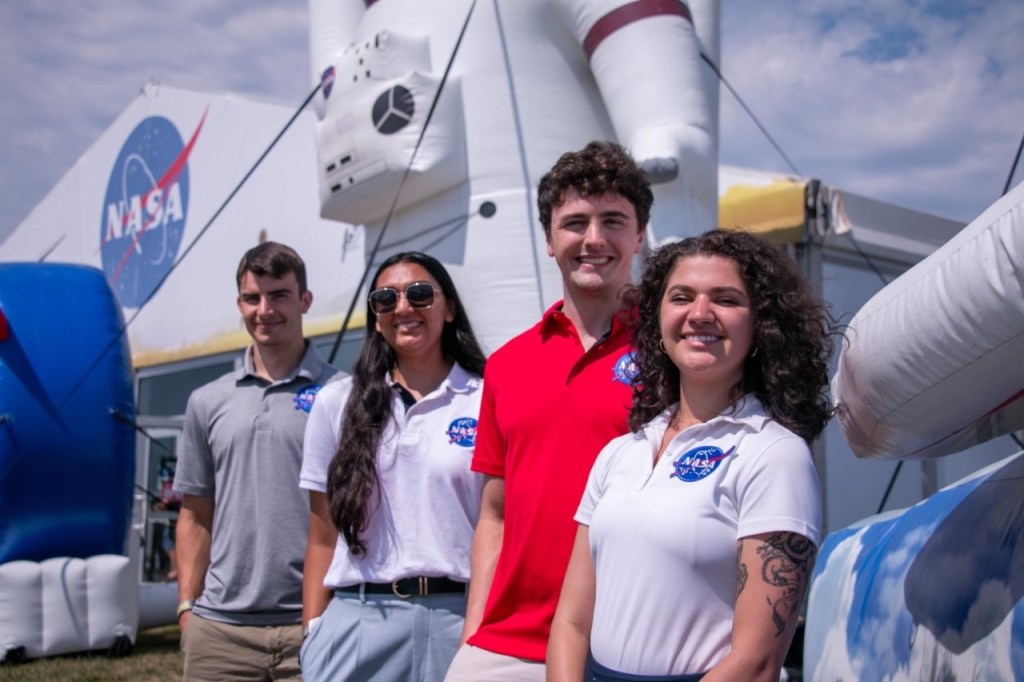When flight crews have to bail out or eject from a crippled aircraft, they need to know how to survive once they hit the ground or water.
To ensure they are up to date on their survival skills, personnel on flight status at Edwards Air Force Base and NASA’s Dryden Flight Research Center recently teamed up for refresher training in land and water survival to prepare them to survive an ejection or bailout over the ocean or a remote area on land.
After academic instruction in the morning, personnel spent the afternoon practicing what they were learning in the Oasis Aquatic Center pool or out in the desert during the two-day training. Under controlled conditions, the flight crews were placed in situations similar to what they might encounter in an actual emergency.
Staff Sgt. Brandon Smith, a survival, evasion, resistance and escape instructor at Edwards, covered aspects such as parachuting into water, parachute water drags, parachute canopy entanglement problems, life raft boarding and survival procedures, use of water survival equipment, rescue techniques, helicopter pickups, medical and psychological aspects of sea and land survival, sustenance and hazardous marine life. On the second day, trainees learned proper techniques for lighting day and night flares and use of signaling mirrors.
NASA Dryden life support chief Bobby McElwain said pilots undergo full training at a survival school early in their careers, have annual discussions about survival and are required to undergo refresher training drills related to desert and water survival every five years. Although Edwards is located in the desert, missions flown over the Pacific Ocean are commonplace.
“[Pilots] are so accustomed to the desert environment that they’re not thinking about water,” McElwain remarked. “We have to drill it into their heads all the time when they come through for life support training: Don’t forget you can find yourself in a water survival situation.”
NASA Dryden research pilot Dick Ewers understands the value of these drills after hearing first-hand from pilots he’s known who have had to eject from stricken aircraft and who said they might not have survived without the training.
“Luckily, we were doing this in a calm, warm swimming pool, and for only an hour outside in the desert and on a cool day,” Ewers noted. “Imagine trying to find and climb into a raft at night in the open ocean where the water is less than 60 degrees and you’re really cold, or trying to get your act together after parachuting down in the desert when it’s over 100 degrees and you broke your arm in the ejection.
“Knowing what to do and that you can do it will make the difference.”
PHOTO / VIDEO EDITORS: High-resolution photos and video segments to support this release are available electronically on the web at: https://www.nasa.gov/centers/dryden/news/newsphotos/index.html
Video dubs are also available by contacting NASA Dryden public affairs at the number above.
For more information about NASA Dryden Flight Research Center and its research projects, visit: https://www.nasa.gov/centers/dryden
– end –
text-only version of this release
To receive status reports and news releases issued from the Dryden Newsroom electronically, send a blank e-mail message to dfrc-subscribe@newsletters.nasa.gov. To unsubscribe, send a blank e-mail message to dfrc-unsubscribe@newsletters.nasa.gov. The system will confirm your request via e-mail.
Dryden Flight Research Center
P.O. Box 273
Edwards, California 93523
Phone 661/276-3449
FAX 661/276-3566
Alan Brown / Jay Levine
NASA Dryden Flight Research Center
(661) 276-2665 / 3459
alan.brown@nasa.gov
























